Tribute | Tarun Tahiliani fondly remembers British fashion designer Vivienne Westwood
I met Vivienne Westwood for the first [and last] time at The Elephant Family Animal Ball in London in 2019. The charity was started by Mark Shand, Queen Consort Camilla Parker Bowles’ late brother, to protect Asian elephants from extinction in the wild. I didn’t know she was coming for the sit-down dinner hosted at Clarence House. Vivienne had almost stopped designing by then and was spending a lot of time as an Earth warrior, as she called herself. She was sailing on Greenpeace ships and crusading for measures to be taken that would halt climate change. That’s what we talked about that night — about the future of our planet.
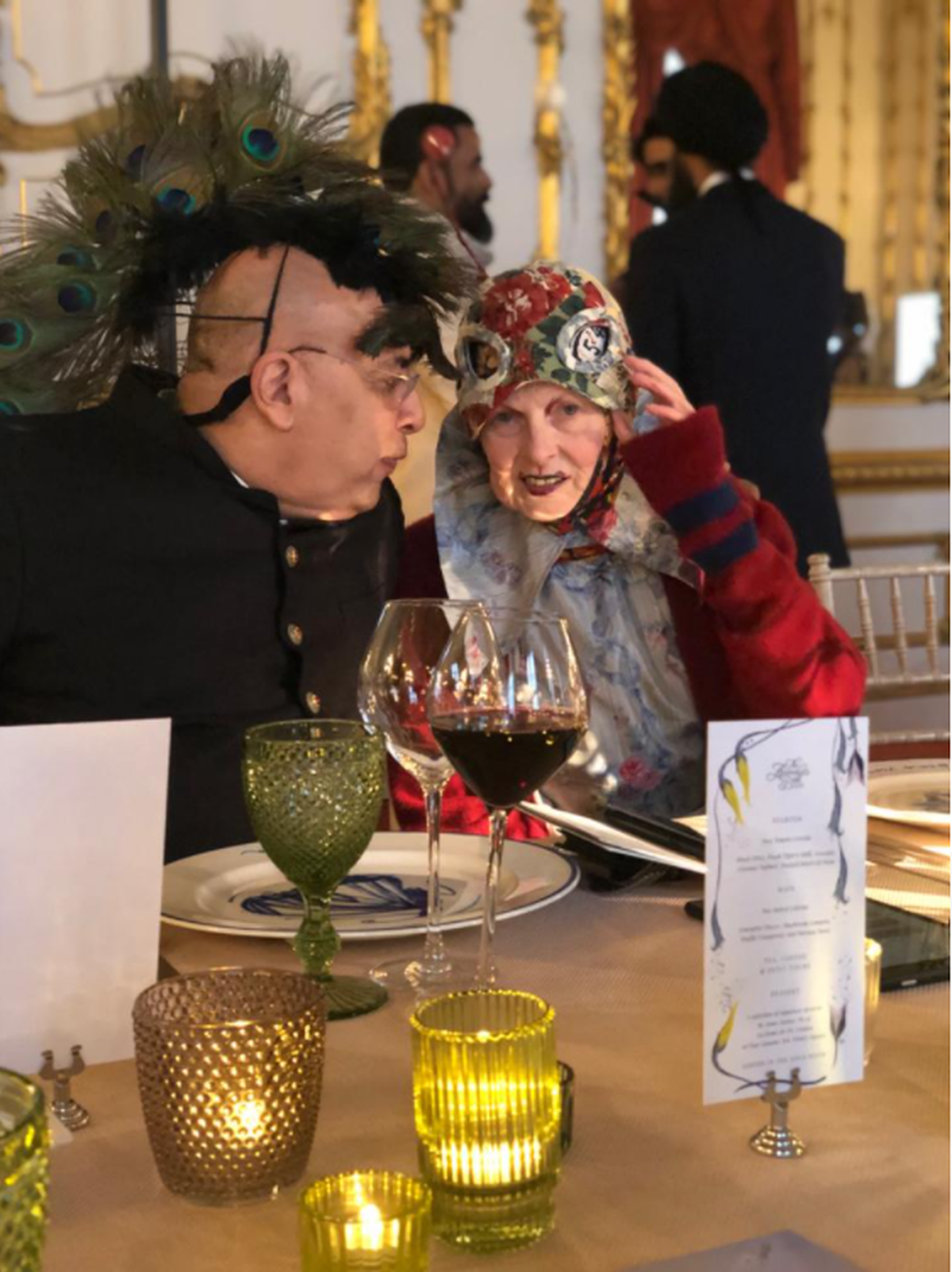
Tarun Tahiliani with Vivienne Westwood at The Elephant Family Animal Ball in London
| Photo Credit:
Special arrangement
Staying true to herself
Two things have always stood out for me. First of all, as Women’s Wear Daily editor John Fairchild had dubbed her, she was a designer’s designer. She hadn’t come out of a structured programme from a school. When you are trained in a discipline, you learn to think in a certain way. But she had no rules; she did what she felt like.
She was part of the original punk movement with her partner Malcolm McLaren, a musician, fashion designer [and manager of the iconic punk band The Sex Pistols]. They’d started a shop on King’s Road — which has taken on several names over the years, from SEX to Seditionaries: Clothes for Heroes — where they went completely bonkers, pushing boundaries and questioning authority and the establishment. Her designs, which have inspired many like Karl Lagerfeld and John Galliano, resembled no other. In the same way that Rei Kawakubo does [though in a different manner] for Comme des Garçons, Vivienne went at fashion in the most uninhibited way and created her own, very particular style.
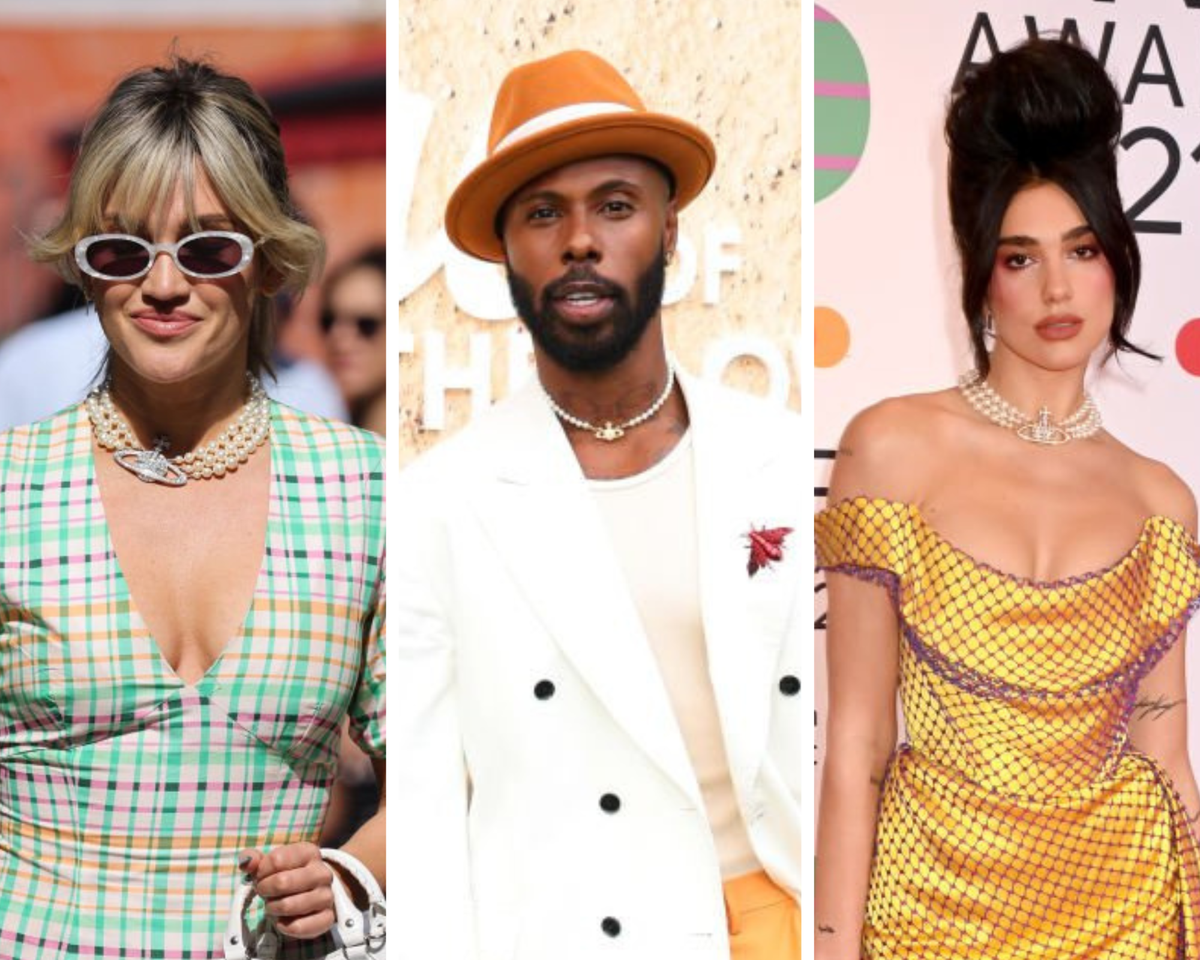
Ashley Roberts, Marquise Vilson and Dua Lipa sport the pearl choker
| Photo Credit:
Getty Images
When Westwood went viral
The last couple of years saw a revival of Westwood, especially with Gen Z referencing her orb logo (a hybrid of the rings of Saturn and the sovereign’s orb) in the form of the Mini Bas Relief pearl choker. It had her going viral on TikTok.
Secondly, what was amazing about her was how she always stayed true to herself. As she moved through life, she believed passionately in what felt right and what she did in that moment in time. Unlike many designers who do beautiful things, she questioned the establishment even when she was not punk. Her clarion call was ‘Orthodoxy is the grave of intelligence’ [a quote from British philosopher Bertrand Russell]. She took risks, and there was no better place than the UK to do this.
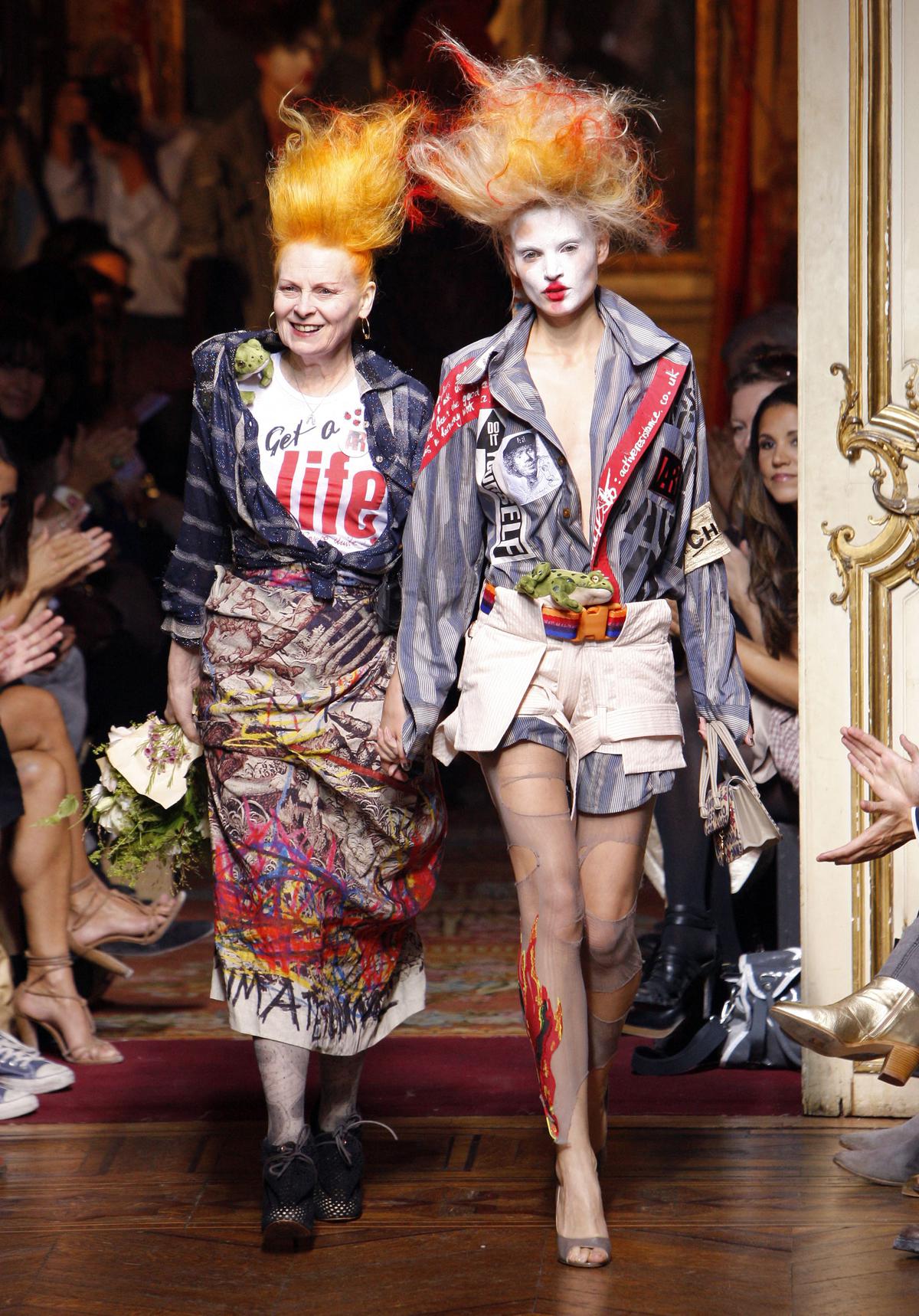
Vivienne Westwood at the end of her ready-to-wear Spring-Summer 2010 fashion show in Paris
| Photo Credit:
AFP
The girl from Tintwistle
Vivienne didn’t have it easy. A single mother, born to working class parents [in 1941 near Manchester], the self-taught designer started by taking classics like T-shirts and slashing them, rolling up the sleeves, writing things on them — as punks did. Then in the 1980s, she became enamoured of high culture and began doing the most beautifully draped evening gowns on the ramp.
Look at her trajectory: she was mostly a sportswear and loungewear designer, but she took fabrics and she played with them. She used a little cotton, she used plaid, she did knits. She’s the one that brought the giant platform shoes with the 13-inch heels that Naomi Campbell stumbled over on the ramp wearing. [The Gillies heels that Westwood launched in 1993 in her ‘Anglomania’ collection, is a style that was originally made in Scotland over 500 years ago.] She put the bustle into the mini skirt, and took corsetry to another level.
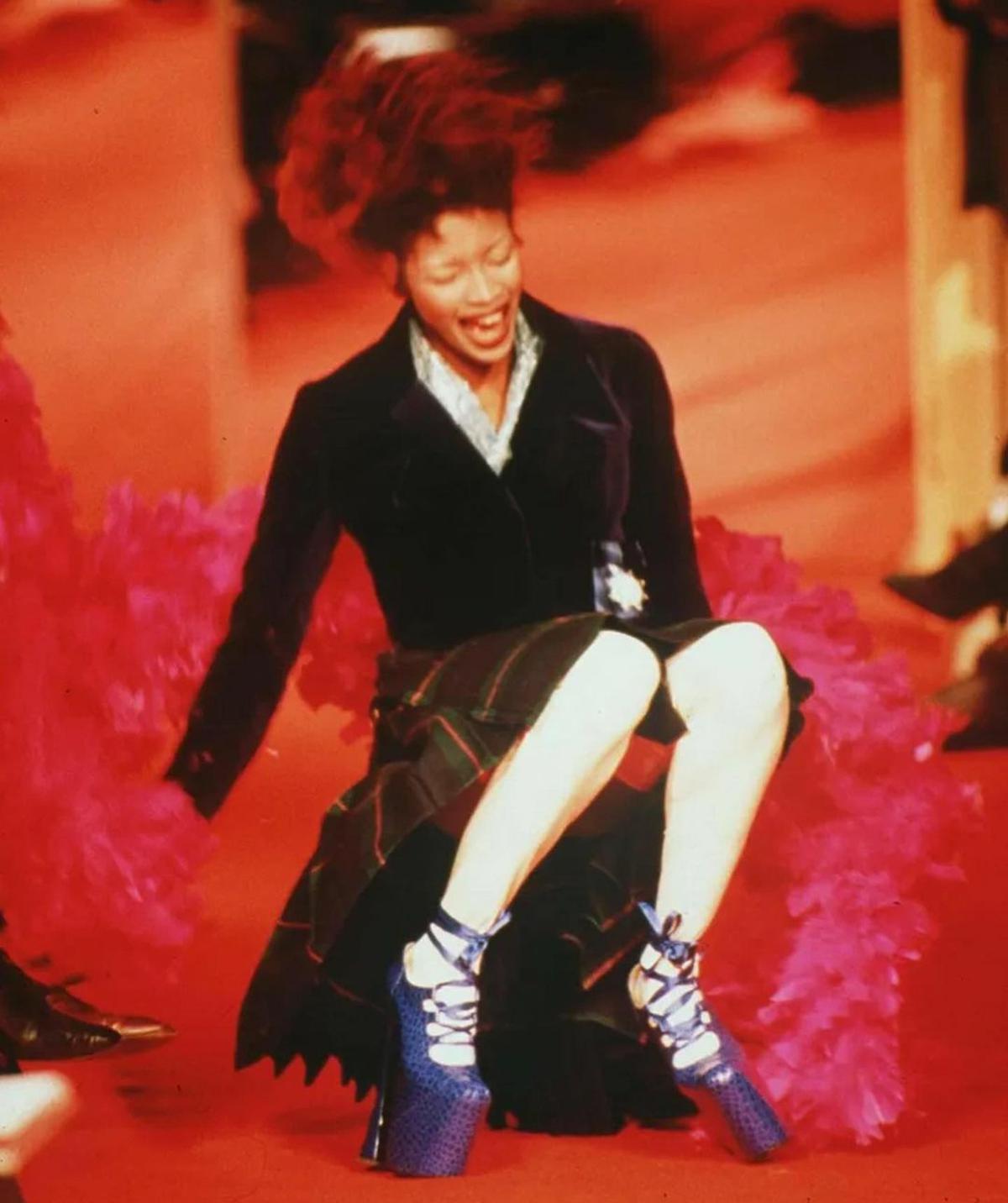
Naomi Campbell stumbles in her 13-inch Gillies heels
| Photo Credit:
@thewestwoodarchives
In fact, when Minal Modi [wife of former IPL chairman Lalit Modi] encouraged me to do corsets, she showed me Vivienne’s work to understand them technically. When Vivienne brought them back into fashion as outerwear, she played with necklines, dug into the past [taking inspiration from 18th-century French paintings], used gold lamé, Swarovski crystals, and detachable, epaulette-topped sleeves. She is why corsets have become a signature silhouette and continue to dominate our wardrobes.
She also did a lot of draping. Of course, the British don’t use as much surface embellishments; they are more about the tucks. She did everything with her hands. They would be driving to Paris in a van for a show and she’d be sitting in the back sewing a jacket.
I was fortunate to see her retrospective at the V&A museum in 2004 — which tracked her evolution over 30-plus years — and later in Bangkok. I took my studio to see it. I remember these T-shirts that said ‘God save the queen’ but had a safety pin put through Queen Elizabeth’s face. Two years later, Vivienne was made a dame for her services to fashion. And I found it funny to see the woman who had gone head on with the establishment sitting in this yellow satin draped dress with a big crinoline and a ruff, giving an interview, looking like the Queen Mother!
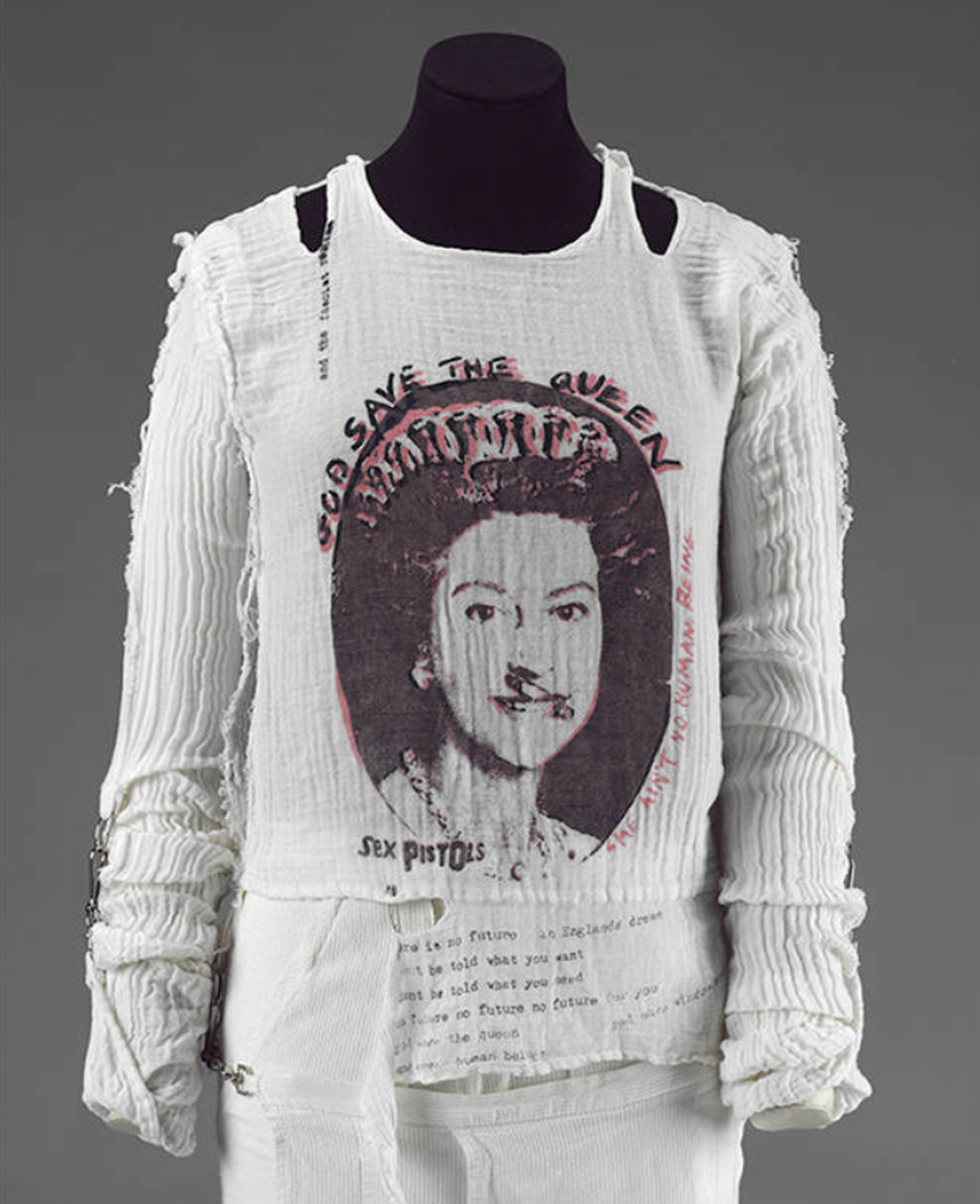
The ‘God save the queen’ tee at the V&A retrospective
| Photo Credit:
Special arrangement
Questioning the status quo
When she married her husband Andreas Kronthaler, [25 years her junior] a former Austrian student of hers, they would go to black tie events where she would dress him in a gown and herself as a man. So she questioned gender identity a long time ago.
She was not afraid to put herself out there. She was ridiculed when she first started doing many of her designs, but that was who she was.
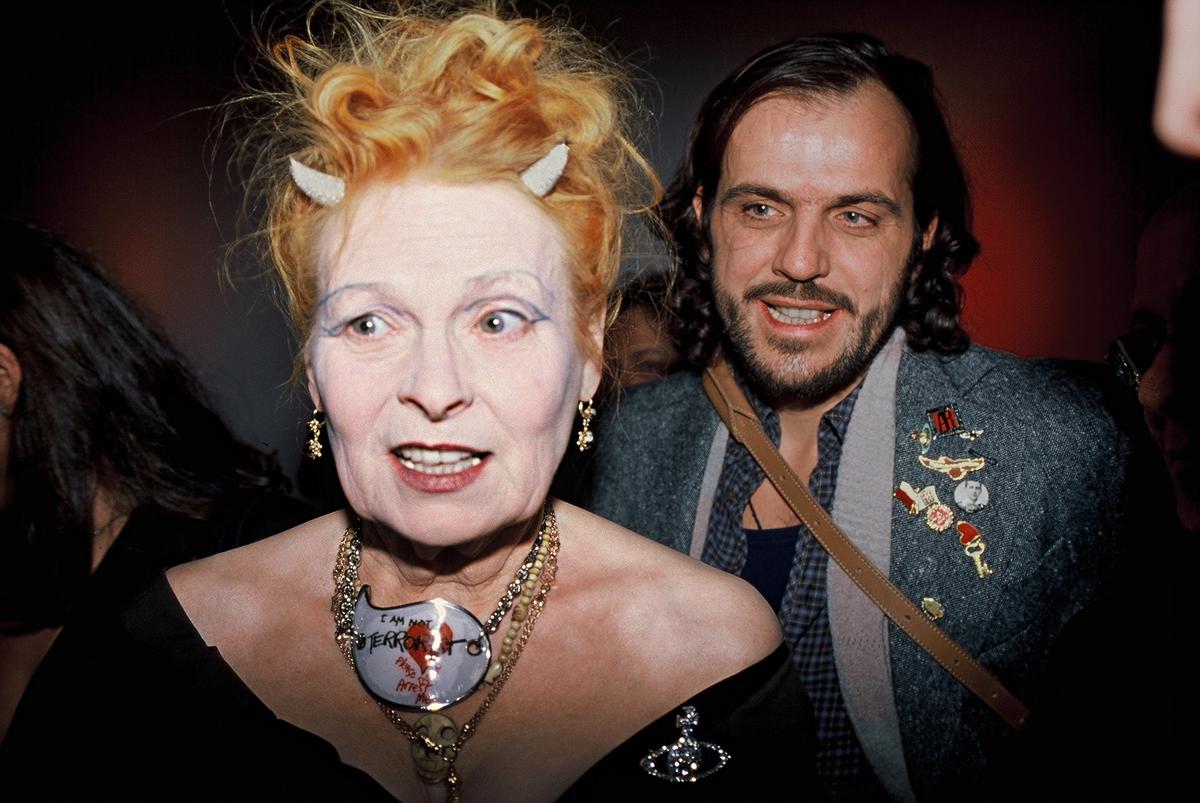
Vivienne Westwood with husband Andreas Kronthaler
| Photo Credit:
Getty Images
Today, the industry is buckling under performative fashion, created solely to catch the eye and go viral. Vivienne used a lot of performance, too — there was always theatrics on her ramp — but she did it with attitude. She did it with models who fit the bill, with a rebellious spirit, with a playfulness and, always, a certain belief.
She was grounded, nothing went to her head. Her evolution came in the most natural, visceral manner. She became a global star, but she didn’t get affected by the trappings. She just got up, went to work and did the next real thing.
Westwood passed away on December 29 at the age of 81.
Tarun Tahiliani is a couturier renowned for his embroideries, drapes, and corsets.
As told to Surya Praphulla Kumar
For all the latest Life Style News Click Here
For the latest news and updates, follow us on Google News.
